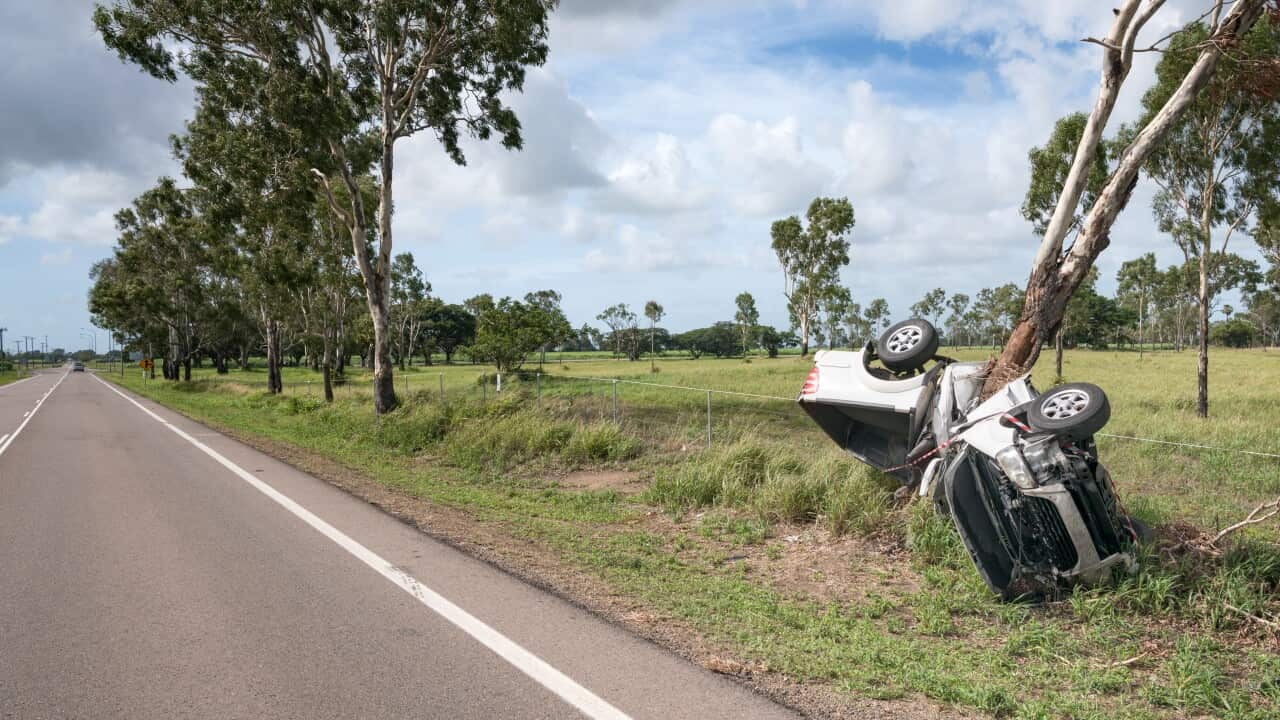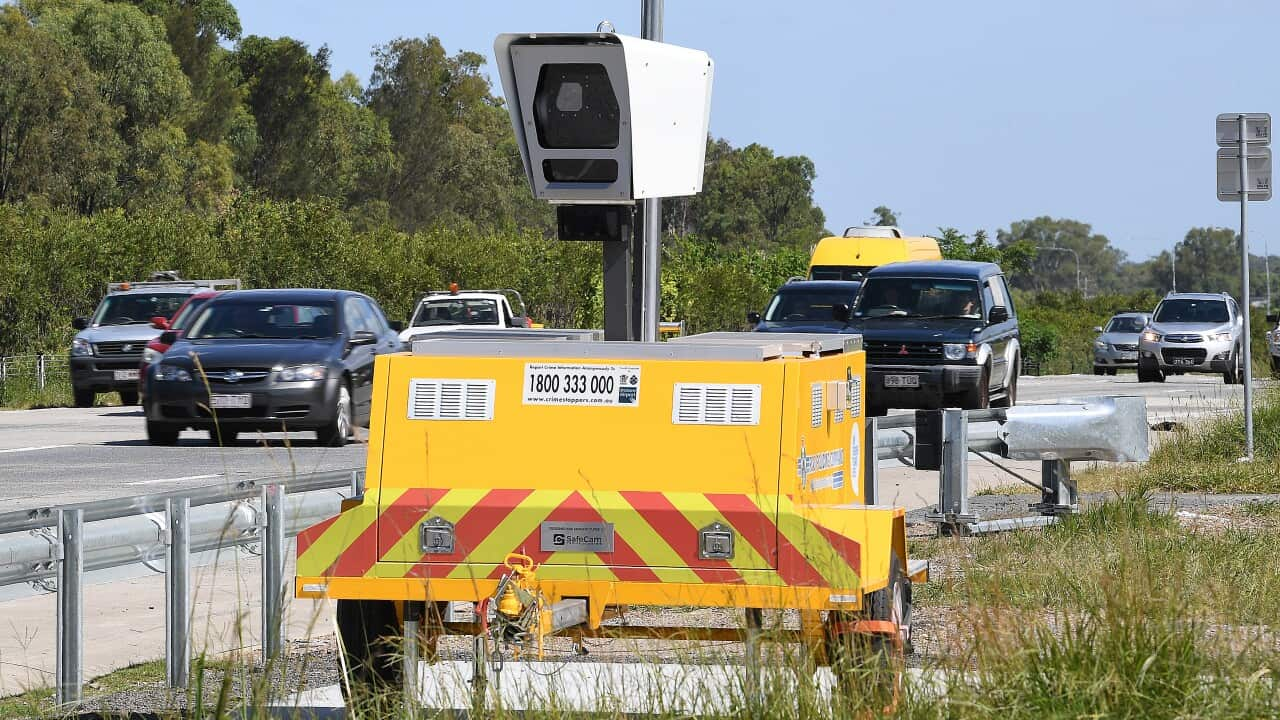Key Points
- More than 1,270 lives were lost on Australian roads in 2023.
- It marked a seven per cent in a year and was the second-highest annual toll since 2011.
- About 39,000 people are hospitalised annually too.
Roadside breath tests, mandatory seatbelts and stringent car and road quality standards have all helped get more Australians home safely over recent decades.
But the nation's reputation as a leader in road safety has been rocked by a rising death toll and a surge in serious injuries.
More than 1,270 lives were lost on Australian roads in 2023, up seven per cent in a year and the second-highest annual toll since 2011.
About 39,000 people are hospitalised annually too, a figure that's barely budged in five years.
Ahead of an international road safety forum in Sydney this week, four leading advocates for safer transport talk about what they'd change. Here's what they said:
Financial rewards for safe driving
Mark Stevenson, director of the University of Melbourne's Transport, Health and Urban Systems Research Lab, says Australia has done well curbing bad behaviour but the law of diminishing returns means new strategies are needed.
"The challenge is that we're now trying to tweak a 20th-century transport system to ensure that it keeps delivering," Stevenson said.

After years of incremental safety improvements, Australia's road toll has begun to rise again. Source: AAP / Supplied/PR Image
"But when you include a financial incentive, there's a significant change in driving behaviour," he said.
"You can personalise feedback ... with a low-cost financial incentive and you can actually enhance safer driving behaviour.
A large trial involving thousands of Australian drivers later this year aims to shed light on whether those incentives will curb road crash rates.
Starting with $120 in a virtual account, drivers will be scored weekly on their driving and be docked $20 if they don't meet their goal.
"At the end of the period, they could lose $120 or gain $120," Prof Stevenson says.
"We know that that's a relatively low cost, you wouldn't hand out $120 to drivers all the time but ... there's a sustainability part there."
Real-time data of crash scenes
Peter Khoury says Australia is "notoriously bad" at releasing timely and consistent crash and road safety data.
According to the National Roads and Motorists' Association (NRMA) spokesperson, the federal government should compel states to share data in real time.
"Only on Wednesday did we find out what the road toll nationally was for January," he said.

Peter Khoury says the federal government should compel states to share data in real-time. Source: AAP / Mick Tsikas
Information on road quality, crash causation and law enforcement such as breath testing and speed cameras also vary wildly.
The NRMA and other motoring bodies say the federal government should compel state and territory governments to share that data in real time to get their share of the annual $10 billion road budget.
"Once you start to collect that information in a detailed and consistent approach, then you can start to pick up trends on why things are happening," Khoury said.
"Because right now, we're running blind.
Painted bike lanes can reduce road trauma
A cycling group calling for more cycling infrastructure might be a given.
But the non-profit Bicycle Network says there is evidence something as simple as a painted bike lane can reduce road trauma.
"Every road user benefits when a bike lane goes on a street," Bicycle Network chief executive Alison McCormack said.
Bicycle Network, which represents 50,000 members, wants a larger part of the federal transport budget dedicated to active transport to boost walking and bike riding.

Cycling advocates say drivers become more alert when bikes are on a street, with fewer crashes. Source: AAP / Tracey Nearmy
Starting at five per cent in 2024/25, the aim would be to bring Australia into line with leading countries and the United Nations recommendation of 20 per cent.
As well as boosting health and reducing social trauma, the financial savings would likely be significant.
In 2023, the Bicycle Network estimated the cost of cycling deaths and injuries to the Victorian economy at roughly $240 million a year.
Proper speed camera enforcement
In Australia's biggest jurisdiction, drivers of all stripes enjoy multiple warnings when they approach any type of fixed or mobile speed camera, according to the Australasian College of Road Safety (ACRS).
"It's completely lacking any evidence base," ACRS chief executive Ingrid Johnston said of NSW's approach.

"Everyone slows down, goes past the camera and then speeds up again," road safety body ACRS said. Source: AAP / Alan Porritt
The issue of warning signs had been a political football for some time but removing them would not require much time, effort or money, like speed limit changes and other changes do, she said.
Another cheap option would be expanding who gets fined by average speed cameras.
More than seven million registered vehicles take to NSW roads each year but point-to-point cameras only monitor the state's 210,000 heavy vehicles and those that come from interstate.
"Point-to-point cameras are really good because they get around all the rubbish arguments about revenue raising and putting the camera in a particular spot where you're going to catch people," Johnston says.
"They're much more effective because they're actually looking at your average speed over a distance."
The only thing stopping it is political will.
"These are two very simple things to just go: this is what everyone else in the country is doing," she said.
"It's like a minimum."












